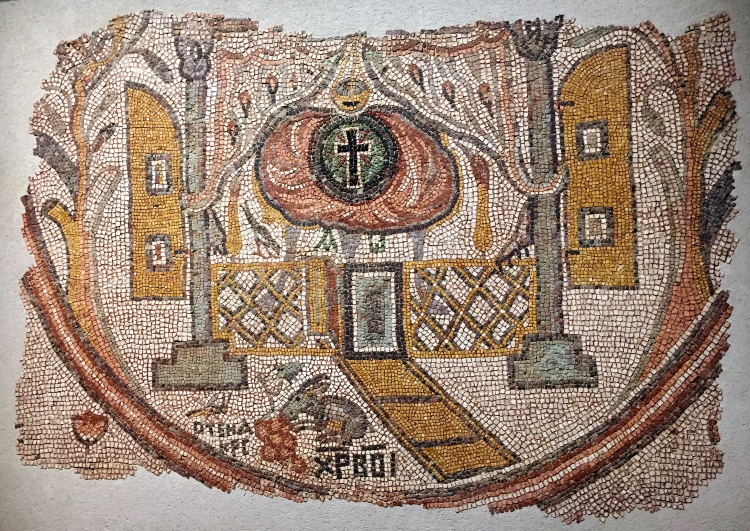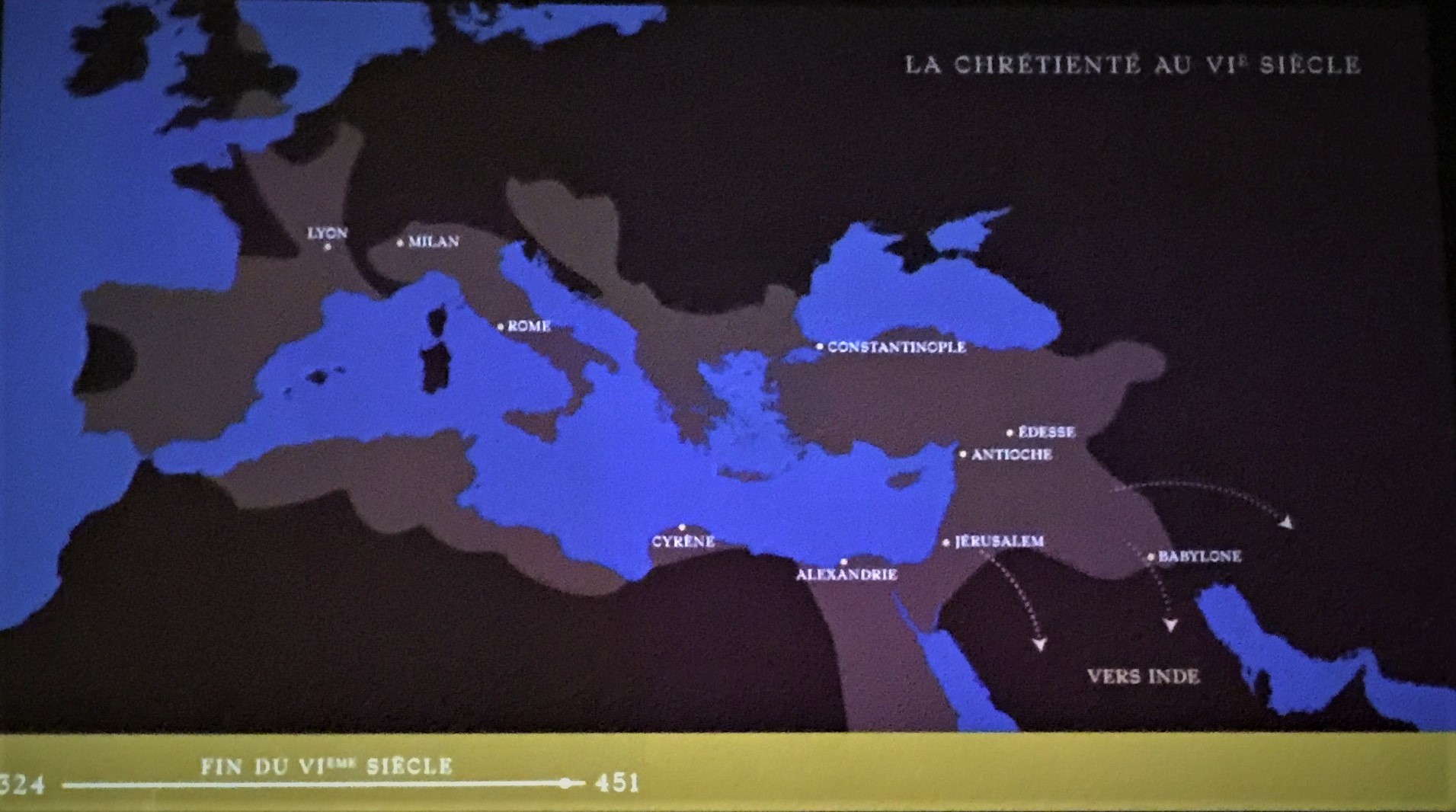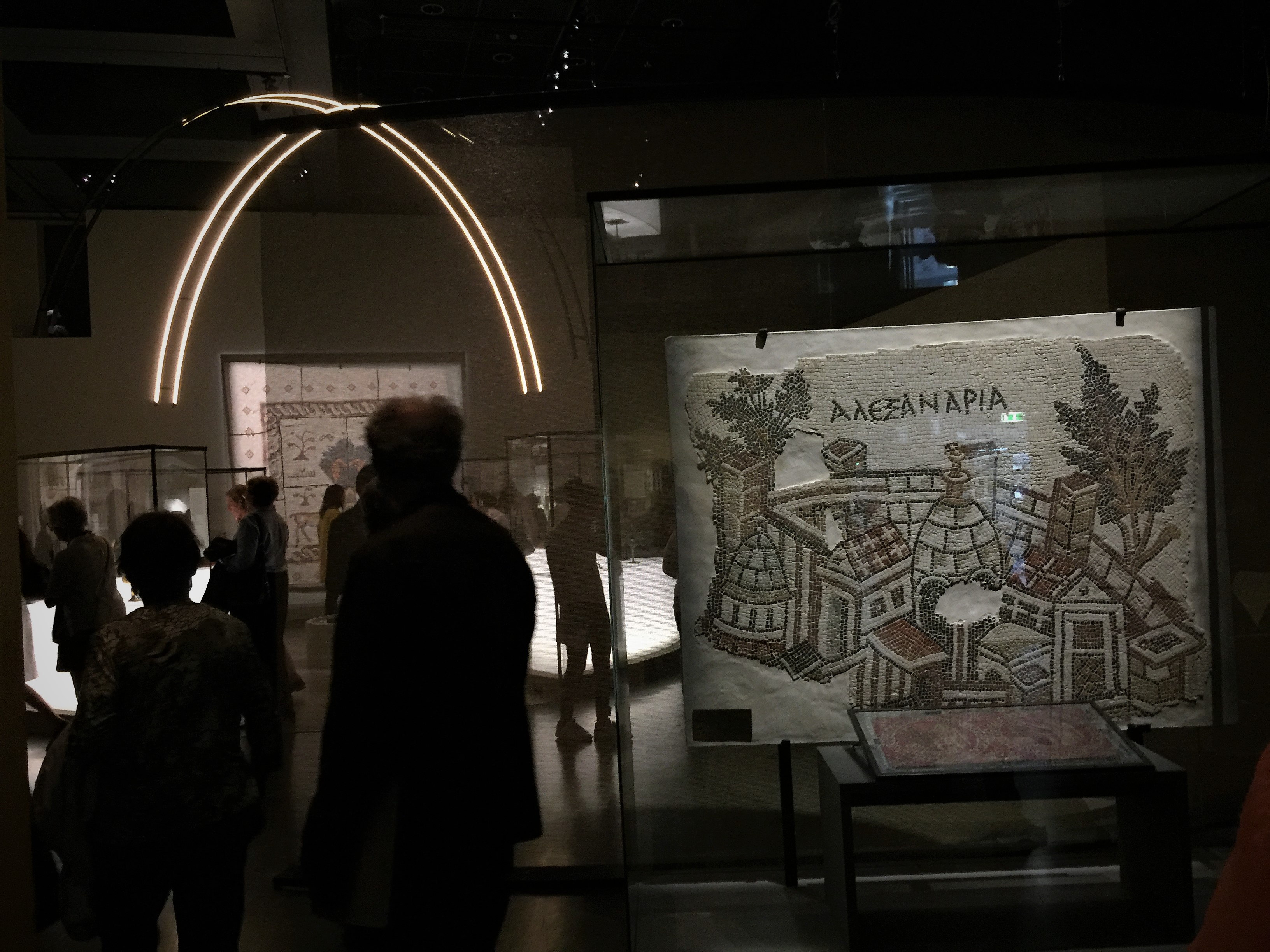Exhibition: Chrétiens d'Orient

From the humblest of births in the town of Bethlehem to schisms and holy wars that dictated the development of the modern world, a nearly 1,500-year-old struggle in the Near East may finally be coming to an end with the simplest of statements: "Christianity is facing elimination in its Biblical homeland."
Of course, if you find it strange to pair the words "Christian" and "Middle East" together, then you're just like anybody else. When I tell people that I'm Antiochian Orthodox, I try to describe it as the "Arab Church." If they hear "Orthodox," they think I'm Jewish. And if they hear "Arab," they think I'm Muslim. Maybe they've heard of the Orthodox Church through the Russians or My Big Fat Greek Wedding, but nobody expects (or knows of) the Turkish-Syrian "Cradle of Christianity."
That's what makes the Chrétiens d'Orient exhibit at l'Institut du Monde Arabe (IMA) so important. It's where the often forgotten roots of the world's largest religion are explored at the most crucial of times. Inaugurated under a joint effort between the presidents of France and Lebanon, it's a chance to raise awareness and "shed light" on one of the greatest crises of genocide in the modern age. With the largest religion in the world (approx. 2.4 billion people) also being the "most persecuted religion in the world," the exhibit targets one of history's most sensitive topics: Christendom.
The expanse of Christendom in the 6th century A.D., L'IMA. Image credit: Henry Hardwick
That said, it's captivating to see how the exhibit acknowledges the diversity of the Christian Faith. Consisting of over 300 items, this vast array of materials originates from the Near East and includes the Eastern Orthodox (Antiochian and Greek), Oriental Orthodox (Armenian, Coptic, Syriac), Catholic (Asyrro-Chaldean, Latin, and Maronite), and Protestant Church traditions. Most notable are the sixth century Syriac Rabbula Gospels and third-century church frescoes from Dura-Europos, the earliest known Christian house church. While it's still evident that Paris is the "Eldest Daughter of the Church" with its Catholic heritage marking just about every corner and skyline, this is the chance to see artifacts preceding the bells of Notre-Dame. Before Christendom developed the Western world, it was outlawed and persecuted as a Jewish heresy by the Roman Empire.
Center of the main exhibit at L'IMA. Image credit: Henry Hardwick
Finally, while the ancient mosaics and icons may seem little more than remnants of the past, it's not only a legacy of the Church but a heritage. These museum relics are the same used in worship two thousand years later. The icons are "windows into heaven." The censers are used as "prayer arise as incense before Thee (God)." As an Eastern Orthodox Christian, Chrétiens d'Orient tells the story of my people. For an Antiochian, these are the remnants of our ancient home, where "the disciples were called Christians first" (Acts 11:26).
The exhibition will be available to visit until January 14, 2018, with regular tickets for 12 euros and reduced tickets for 10 euros. The exhibit is open from 10 AM to 6 PM on Tuesday, Wednesday, Thursday, and Friday, while on weekends and holidays, it's open from 10 AM to 7 PM. It's closed on Mondays.









